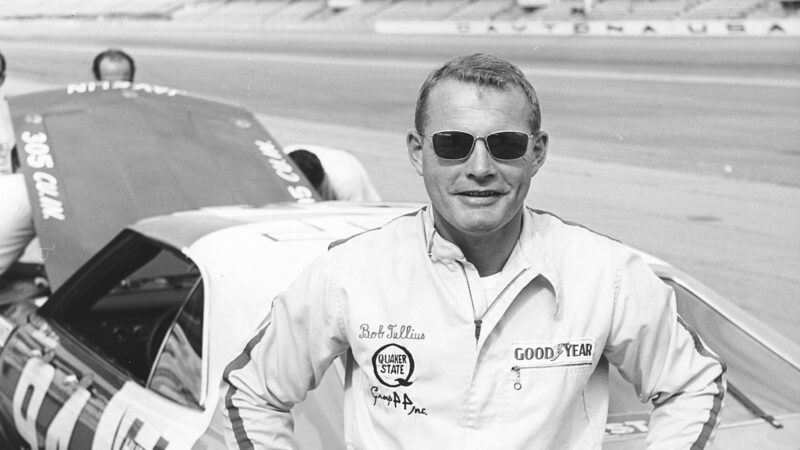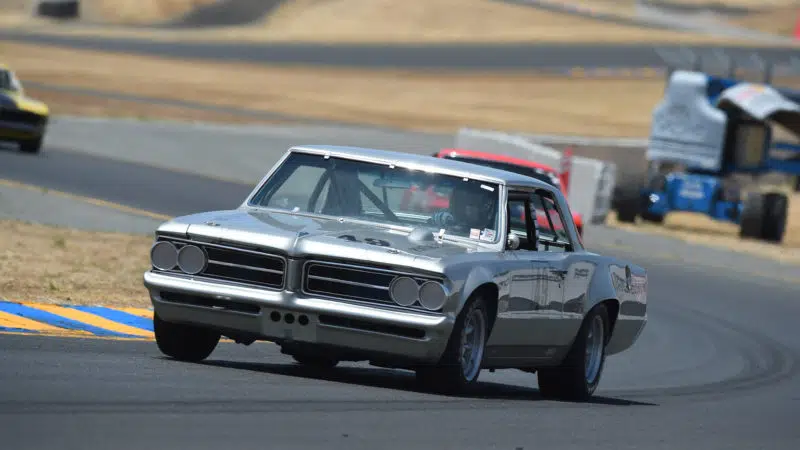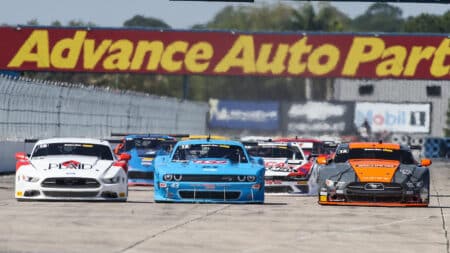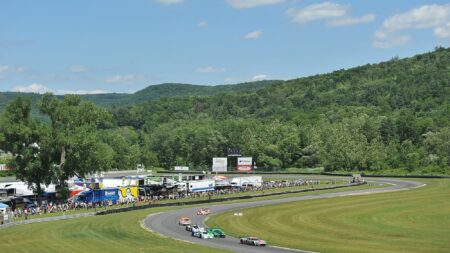Six years earlier, to repay his father for putting him through college, Adams had used the GM employee discount program to buy him a plain-Jane Pontiac Tempest. Later, the car was handed down to Herb’s wife, Sandi. The Tempest had 86,000 miles on the odometer and rust in the wheel wells when Adams gas-welded in a roll cage. “It was a little heavy,” he says, “but in the process of racing it, we continually improved it.”
At the last club race of the season, Adams waxed a pair of Corvettes – driven by Chevrolet engineers – at Waterford Hills. This whetted his appetite to tackle Trans-Am in 1971. Adams persuaded six fellow Pontiac engineers to pony up $1,000 apiece to upgrade the Tempest. Working out Adams’s garage with a handful of additional volunteers, they spent 90 days thrashing to get ready for the season opener. “We had no time, and we had no money,” he recalls.
Car and crew arrived at Lime Rock looking decidedly secondhand, in stark contrast to the button-down Roger Penske Javelin operation and Bud Moore’s NASCAR-quality Mustang team. “People would walk by it, look and maybe laugh,” Motor Trend reported in its race coverage. “Mostly these people looked upon the car as a joke.”

Rain specialist Bob Tullius (here in 1969) sealed the Gray Ghost legend at Lime Rock
ISC Images via Getty
Visually, the major clue that the car was a sleeper were the fender flares Adams had fashioned to accommodate fat rear tires on all four corners. But under the boxy body, the suspension had been cleverly reworked. Taller front spindles with higher negative-camber gain – a tweak Pontiac had developed to race the Firebird – were fitted. At the rear, new drag racing-inspired pickup points produced more anti-squat. The team also pioneered the use of negative camber on the live axle, a practice that would be widely adopted by NASCAR builders.
“Our philosophy was that softer springs that use full travel combined with compression bumpers made more sense than stiff springs and no compression bumpers,” says Harry Quackenboss, who worked on the suspension and brakes. “And in order to get roll stiffness, we used larger-diameter sway bars than were normal. The extra compliance meant better handling on tracks that were rough. It also meant better power out of the corners.”
Bob Tullius of British Leyland Group 44 fame agreed to drive the car. (As a bonus, he lined up a tyre deal and some commercial sponsorship.) Tullius had never driven the car before, and during practice, he misdiagnosed a minor fan-belt issue as a failing motor. He missed qualifying while the engine was being torn down, so he had to start from the back.
No problem. A deluge soaked the track on race day, and Tullius – an acknowledged rain-meister benefiting from the big front tires and the negative camber of the rear tires – scythed through the field. By lap 86, he was second to Mark Donohue’s factory-backed Javelin, prompting the track announcer to liken the Tempest to “a gray ghost” emerging from the mist. Although a head gasket failed with a handful of laps to go, a star had been born.
Tullius was fourth at Bryar three weeks later. Limited time and resources prevented the team from competing for wins – until Mid-Ohio. There, as more rain fell, Tullius again ran second to Donohue until the track dried, when a painfully slow pit stop for tires dropped him to fifth. After another fifth-place finish at Michigan International Speedway, the Tempest was mothballed.
For 1972, Adams and company decided to build a new Firebird, which Milt Minter drove to victory at Mid-Ohio (and second in the championship). The Gray Ghost was sold – for $2,500, sans engine – to a Pontiac dealer, who club-raced it for several years before parking it. After a long quest, Hildebrand bought the car in 2015 and commissioned a rotisserie restoration.



